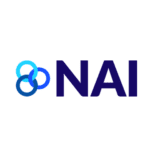Why are KPIs important in the E-Commerce Sector?
KPIs act as a compass, guiding businesses toward data-driven decision-making and helping them stay competitive in a fast-paced digital landscape. In this blog, we will explore the most important KPIs in the e-commerce sector and how they can contribute to sustained growth and profitability.
In the dynamic and competitive e-commerce sector, tracking and analyzing key performance indicators are vital for success. The KPIs mentioned in this blog offer valuable insights into the effectiveness of your marketing strategies, customer engagement, and overall business performance. By consistently monitoring and optimizing these metrics, e-commerce businesses can make data-driven decisions, enhance customer experiences, and position themselves for sustained growth and profitability in the digital age.
1. Conversion Rate (CR)
The conversion rate is a fundamental KPI that measures the percentage of website visitors who take a desired action, such as making a purchase, signing up for a newsletter, or filling out a form. A high conversion rate indicates that your website effectively persuades visitors to become customers. Factors influencing conversion rates include website design, user experience, product presentation, and the efficiency of the checkout process. Regularly monitoring and optimizing the conversion rate can significantly impact revenue and overall performance.
2. Customer Acquisition Cost (CAC)
The Customer Acquisition Cost calculates the total expense of acquiring a new customer. This KPI includes marketing costs, advertising expenses, and any other costs incurred to attract potential customers to your e-commerce platform. A low CAC is desirable as it implies that you are efficiently acquiring customers at a reasonable cost, ensuring a healthy return on investment (ROI) from your marketing efforts.
3. Customer Lifetime Value (CLV)
CLV measures the total revenue a customer will generate throughout their relationship with your e-commerce business. Knowing the CLV helps in understanding the long-term value of acquiring a customer. Businesses can boost CLV and foster customer loyalty by increasing customer retention and optimizing the shopping experience.
4. Cart Abandonment Rate (CAR)
The Cart Abandonment Rate reveals the percentage of visitors who add items to their shopping carts but leave the website without completing the purchase. A high abandonment rate can indicate various issues, such as unexpected costs during checkout, complicated payment processes, or shipping concerns. Analyzing and addressing the factors behind cart abandonment can lead to increased conversions and revenue.
5. Average Order Value (AOV)
The Average Order Value reflects the average amount customers spend in a single transaction on your e-commerce platform. Increasing the AOV can be achieved through cross-selling, upselling, and effective product bundling strategies. A higher AOV contributes directly to higher revenue without acquiring new customers.
6. Customer Retention Rate (CRR)
The Customer Retention Rate calculates the percentage of customers who continue to purchase from your e-commerce store over a specific period. A high CRR signifies that your business successfully retains customers, essential for sustainable growth. Repeat customers often spend more than new ones and can become advocates for your brand, leading to organic growth through word-of-mouth marketing.
7. Return on Investment (ROI)
ROI measures the profitability of your e-commerce efforts. It considers the revenue generated concerning the total costs incurred, encompassing marketing, inventory, and operational expenses. A positive ROI indicates that your business is making a profit, while a negative ROI suggests adjustments are necessary to improve efficiency and reduce losses.




